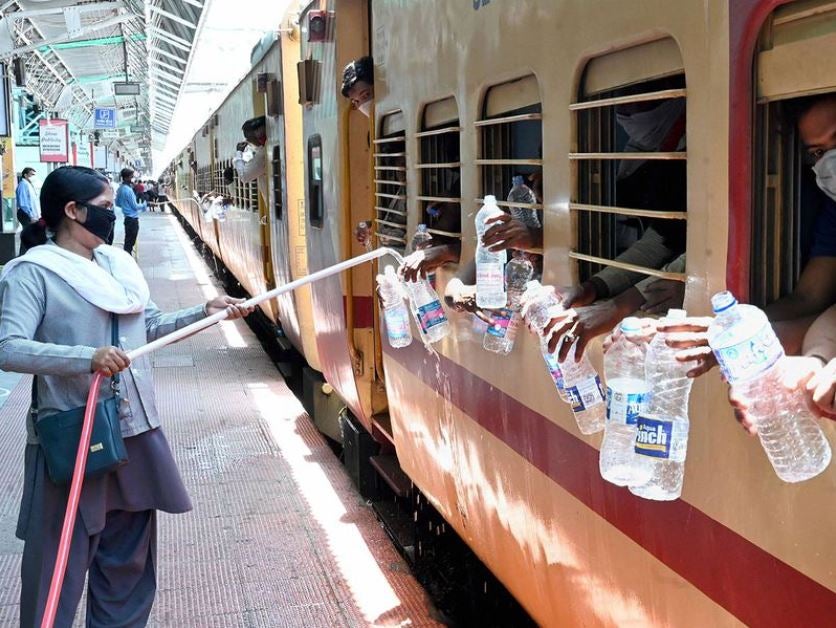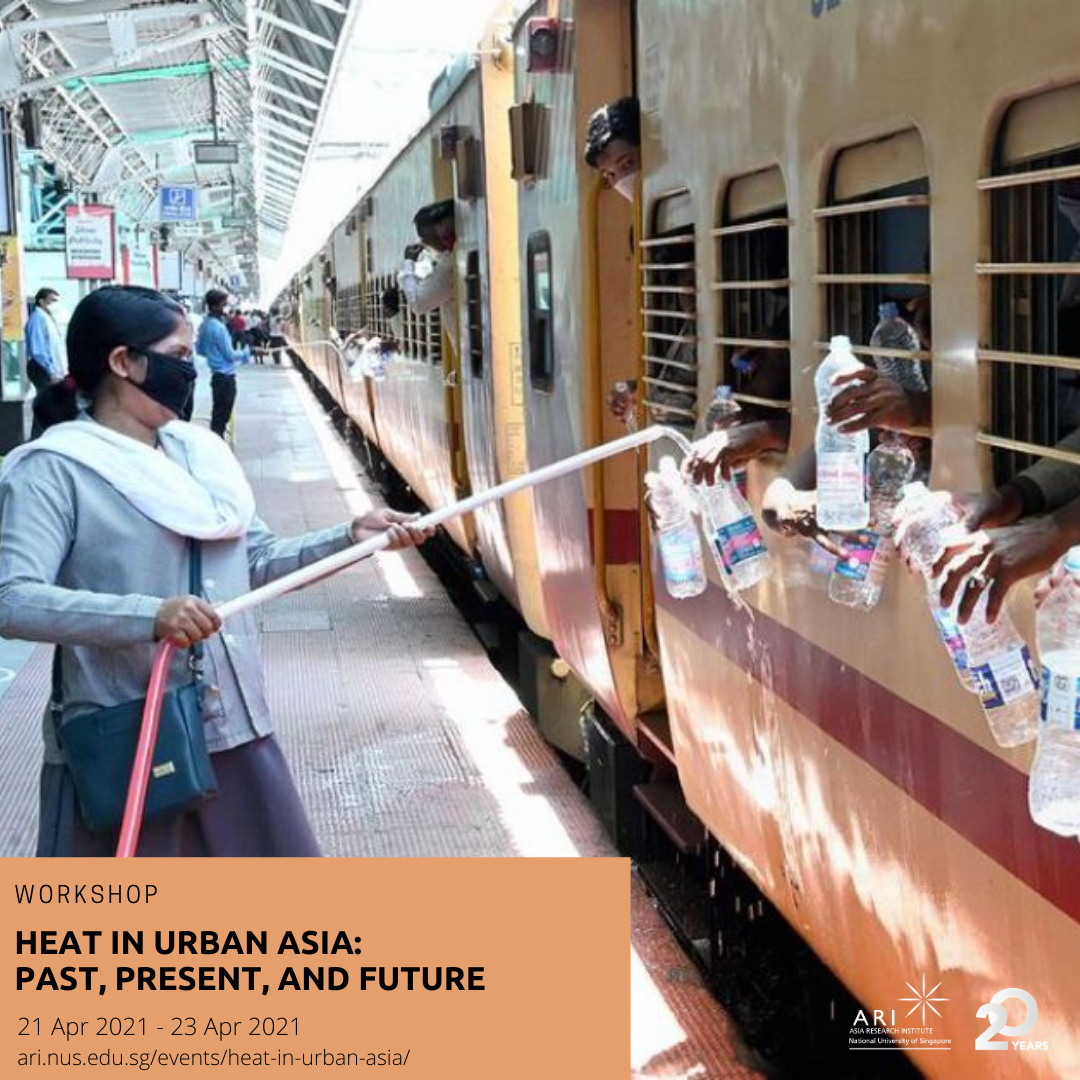Heat in urban Asia: Past, present, and future

Public attention has been captured by the problem of global climate change, yet many people remain entirely unaware of the localised problems caused by heat in urban areas. Populations in South Asia, in particular, have historically been suffering due to heat in their daily lives.
Some researchers have suggested that climate change could lead to summer heat waves in South Asia with levels of heat and humidity that exceed what human beings can survive in without protection by the end of this century.
In 2020, India recorded its hottest day at 50°C in May and New Delhi endured its hottest May days in nearly two decades. Across the earth, such high temperature extremes have become more prevalent over the past decades and will likely get worse as climate change continues.
While South Asia covers only three percent of the world’s land area, it is home to a quarter of its population. Unfortunately, the people in South Asia are going to be hit hard by rising temperatures. It is also anticipated that heat will be among the most serious global health crises after the current pandemic.
ARI’s STS Cluster launched the three-year project ‘Heat in Urban Asia’ in 2019. Very little has been written on the history or social/cultural engagement with heat in Asia, and even hard temperature data from the past has been left uncollected. These are some of the knowledge voids our project is designed to fill. Funded by an MOE Tier 2 grant, this is among the first and arguably the most ambitious effort to understand urban heat from a humanities and social science perspective, not only in (and for) Asia, but globally.
Our research team is led by Principal Investigator Gregory Clancey of ARI, and Co-PIs are Chang Jiat Hwee (NUS School of Design and Environment) and Fiona Williamson (Singapore Management University). Yoonhee Jung of ARI is the postdoctoral fellow managing the project, which includes many other local scholars, as well as overseas collaborators such as Christopher Courtney (Durham University, UK), Johnny Chan (Hong Kong University) and Amita Baviskar (Institute of Economic Growth, Delhi).
The project is highly interdisciplinary. Scholars from a variety of different social and physical science backgrounds are documenting temperature changes, exploring past methods of heat alleviation, and examining the problem of hazardous heat. While we are tackling a problem of particular significance to the governance, economy and life of Singapore, we are also focused on three additional cities chosen as comparable or contrasting examples: Hong Kong, Delhi and Wuhan. The aim of this project is not only to document past and present experiences but also to use such knowledge to craft policy recommendations for the coming hotter future.
Aims and themes
Although heat is one of the major environmental constraints facing cities in Asia, this is the first social science and humanities project to explore these topics from a Pan-Asian perspective, and using Asian cities as case studies. The following research questions are at the heart of the project: 1) How, where, and to what degree have heat islands developed in Singapore and comparable Asian cities from the pre-colonial period to the present, and what is the trajectory of change?; and 2) How have different cultural, social, technical, design and planning practices been relieved or exacerbated by urban heat?
We explore these questions by dividing our project into three interlocking parts:
- Taking the city’s temperature
This part aims to provide a comprehensive record of changing temperatures in Singapore and the other Asian cities we have targeted. Geographers and climate scientists have identified urban heating as a major problem, yet their ability to analyse longer-term trends is limited by available datasets. This component thus utilises the skills of historians and social scientists to collect missing historical data, which will be analysed by climate scientists and geographers. This will provide those working in the climate sector with data to trace heat over a far longer time period than is currently available (i.e., 1800-1950) and will facilitate comparisons between urban, peri-urban, and control sites to examine urban heating more closely.

2. Living with heat
This component documents past and present problems caused by extreme heat and aims to create a record of different techniques and technologies used to alleviate heat. Our research explores everyday practices of living with heat in relation to changes in the design and planning of the built environment, as well as identifying how everyday practices interact with other forms of material culture and cultural practices. For example, cold drinks and desserts are ubiquitous contemporary remedies to ease heat within the body (see figure 3).
However, the introduction of these contemporary dietary remedies is related to the history of cold chain the region as well as the cultural aspects around foods, such as how the the idea of what is safe and healthy has been shaped in the region.

We also have seen a series of cooling technologies, including passive cooling design for buildings, fans, and air conditioners, to reduce indoor heat (see figure 4). For instance, Cherian George called Singapore the Air-conditioned nation. The introduction and massive installation of air conditioners in Singapore had significant social, economic, political, and cultural impacts on Singaporeans’ lives. As such, dealing and living with heat have intersected with many aspects of society so far.
We also examine how various political and social processes have helped to determine exposure to heat in the past and present, and how people have kept cool using low-energy, everyday alternatives to current technologies. A combination of archival research, oral history interviews, and ethnographic fieldwork is used to create an archive of the lived experiences of heat in urban Asia.

3. Disastrous heat
Heatwaves are one of the most lethal and economically destructive form of hazard to strike urban Asia, yet are also probably the least well-understood. In this part of the project, historians are scouring the archives for records of such events, while social scientists study the contemporary social, health, and economic consequences of heatwaves, and natural scientists examine the changing frequency and intensity of this hazard type. The different meanings ascribed to heat across Asian cultures will also be explored, the idea of a ‘heat wave’ being itself a modern Western term with different nuances of translation and response in different parts of Asia.
First international conference on heat in urban Asia
Our team is currently in planning for an international conference on Heat in Urban Asia: Past, Present, Future, 22-23 April 2021. This will be the first academic workshop or conference to consider the phenomenon of heat in urban Asia from a social science and humanities perspective, informed by research in the physical sciences, and with focus on policy recommendations. The topic has attracted strong papers from the UK, Germany, China, India, Pakistan, Ireland, Indonesia, Australia, Switzerland, Vietnam, Thailand, etc. This conference and its subsequent publication promise in particular to be a landmark in theorizing the relationship between heat and society, which has heretofore been an underdeveloped theme in social science.
Building public knowledge
Public attention has been captured by the problem of global climate change, yet many people remain entirely unaware of the localised problem caused by the urban heat island effect. An open-access internet resource created in our project will inform the global public about how certain patterns of urbanisation can exacerbate heat. We are collating oral history testimonies, archival documents, and historic maps, images and videos to be presented on a public-facing website hosted by (and created in collaboration with) the National University of Singapore Libraries.
The interactive web platform will provide an educational resource for the general public and students to learn about the history of Singapore and other cities in novel ways.

The views expressed in this forum are those of the individual authors and do not represent the views of the Asia Research Institute, National University of Singapore, or the institutions to which the authors are attached.







